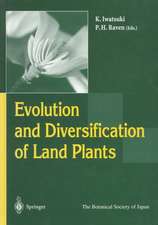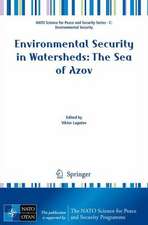Life in the Himalaya – An Ecosystem at Risk
Autor Maharaj K. Pandit, Peter H. Raven, Kamal Bawaen Limba Engleză Hardback – 29 iun 2017
Maharaj Pandit divides the Himalaya's history into four phases. During the first, the mountain and its ecosystems formed. In the second, humans altered the landscape, beginning with nomadic pastoralism, continuing to commercial deforestation, and culminating in pockets of resistance to forest exploitation. The third phase saw a human population explosion, accompanied by road and dam building and other large-scale infrastructure that degraded ecosystems and caused species extinctions. Pandit outlines a future networking phase which holds the promise of sustainable living within the mountain's carrying capacity.
Today, the Himalaya is threatened by recurrent natural disasters and is at risk of catastrophic loss of life. If humans are to have a sustainable future there, Pandit argues, they will need to better understand the region's geological vulnerability, ecological fragility, and sociocultural sensitivity. Life in the Himalaya outlines the mountain's past in order to map a way forward.
Preț: 407.57 lei
Nou
Puncte Express: 611
Preț estimativ în valută:
77.99€ • 81.43$ • 64.55£
77.99€ • 81.43$ • 64.55£
Carte tipărită la comandă
Livrare economică 05-19 aprilie
Preluare comenzi: 021 569.72.76
Specificații
ISBN-13: 9780674971745
ISBN-10: 0674971744
Pagini: 384
Dimensiuni: 163 x 241 x 35 mm
Greutate: 0.73 kg
Editura: Harvard University Press
ISBN-10: 0674971744
Pagini: 384
Dimensiuni: 163 x 241 x 35 mm
Greutate: 0.73 kg
Editura: Harvard University Press
Notă biografică
Maharaj K. Pandit is Dean of the Faculty of Science and Professor of Environmental Studies at the University of Delhi, and a Radcliffe Fellow at Harvard University.
Descriere
The collision of the Indian and Eurasian plates 50 million years ago created the Himalaya, along with massive glaciers, intensified monsoon, turbulent rivers, and an efflorescence of ecosystems. Today, the Himalaya is at risk of catastrophic loss of life. Maharaj Pandit outlines the mountain's past in order to map a way toward a sustainable future.



















